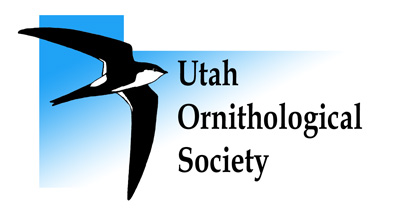|
Book Review |
|
Utah’s Featured Birds and Viewing Sites |
|
Utah’s Featured Birds and Viewing Sites: A Conservation Platform for IBA’s and BHCA’s; Keith Evans and Wayne Martinson, Photography by Paul Higgins; printed by Sun Lith, Salt Lake City, Utah 2008; ISBN: 978-1-60702-936-6; 364 pages, 6.5 x 9 inches; $24.00. The authors are both well-recognized birders and conservation enthusiasts of Utah, and are well-suited to produce this volume. Their target audience are “advanced checklist birders,” not the casual backyard birder, and their goal is to encourage and guide those advanced birders toward becoming “conservation birders” as well. Keith received a Ph.D. from Cornell University with a major in Wildlife Science and minors in Nutrition and Forest Science with an emphasis on Ornithology. He is also the author of the three Birding Trails maps for Utah. Wayne is the National Audubon Society’s Important Bird Coordinator for Utah, as well as the Utah Wetlands Coordinator and Utah Important Bird Areas Coordinator. Definitions – IBA
means Important Bird Area What this book is not is a field guide to Utah or Western birds. There are plenty of guides for that. The main thrust of this volume is to delineate several of Utah’s species (out of approximately 435 known species in the state) to represent key habitats and to highlight those species that require conservation attention to maintain viable populations. The featured birds are mainly species selected by several bird conservation groups and are used to justify IBA and/or BHCA designation. Western Hemisphere linkages, other conservation programs, and Utah’s bird and habitat diversity are also dealt with in a cogent manner. Globally important species are considered first – from Tundra Swan, the two Sage-Grouses, Snowy Plover, several sandpipers to Forsters’ Tern. Each of the featured species is discussed as to identification tips, biology, conservation concerns, and IBA/BHCA contributions and goals. Continuing on is a list of Utah Sensitive Species, such as, Sharp-tailed Grouse, Northern Goshawk, Mountain Plover, cuckoos, Spotted Owl, American Three-toed Woodpecker, and Bobolink. There are some 19 species that are of concern to the Partners in Flight, such as, Gambel’s Quail, Osprey, Boreal Owl, Bell’s Vireo, Virginia’s Warbler, Abert’s Towhee, and Black Rosy-Finch. Then there are other notable species – Canvasback, Sandhill Crane, Flammulated and Northern Pygmy Owls, Red-naped Sapsucker, Juniper Titmouse, Green-tailed Towhee, and Yellow-headed Blackbird, among others. The 21 Important Bird Areas in Utah are discussed as to location, site description, ownership, birds to be expected, habitats, conservation issues, and concerns about visiting each site. The Bird Habitat Conservation Areas are listed in geographical sequence so that one may visit more than a single site when venturing out. All in all, the book is very comprehensive with its major premises, that is, concern with evaluation and conservation of birds of concern and their habitats. Many common birds are not even mentioned, because they are not under threat of any particular kind. The editing is very good. As an editor and proofreader, I tend to be somewhat critical of punctuation, spelling, and grammatical errors, and this book is remarkably free from them. The only thing that some may notice is a certain amount of duplication of information, as each author will discuss a certain bird or location in his own way according to his assignment. Paul Higgins is among the elite of Utah nature photographers, and many of his images are found along with the descriptions of the birds. Again, the book is not meant for everyone, but for those birders whose interests extend beyond mere listing, and for those who are interested in the concepts of two of Utah’s most well-known field ornithologists. Steve Carr, UOS President |
|
|
